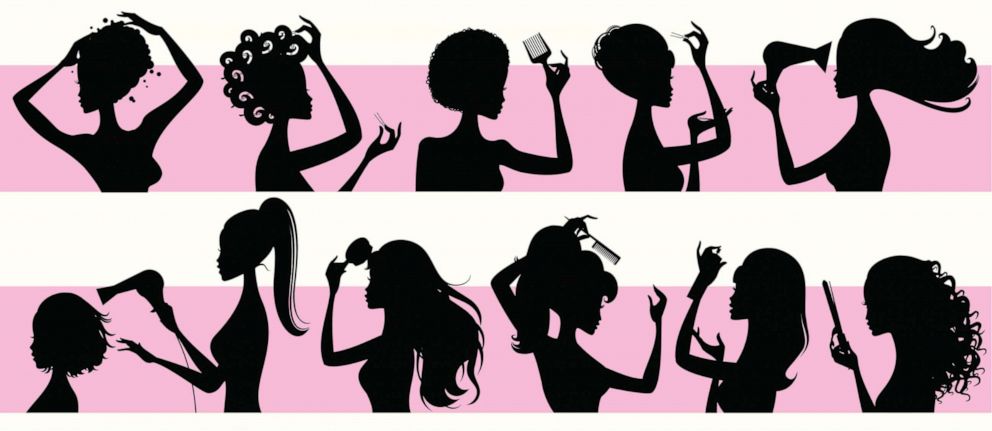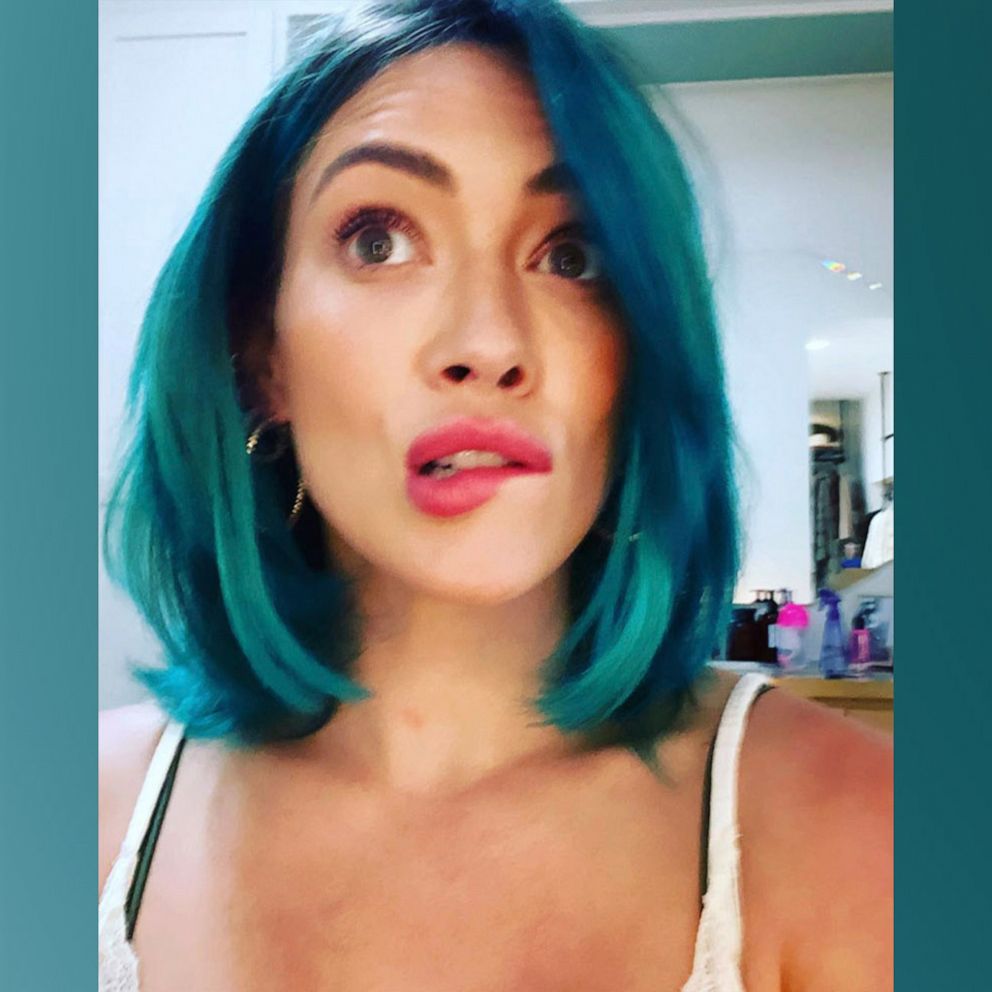Healthy hair-growth tips, best practices and products to add to your routine
Have you ever wondered about your own personal hair growth journey?
Moment of truth: I have, and can recall putting my late father's undershirts on my head pretending it was long hair as a young girl. My mom would always playfully remove it from my head to assure me that my full head of tightly coiled strands were fine just the way they are.
While I quickly let the whole T-shirt wig idea go, over time I learned that I wasn't the only person who has pondered hair growth or loss.
In fact, former television host Ricki Lake opened up to "Good Morning America" in January about her own 30-year battle with hair loss.
While making an appearance without any added hair extensions or a wig on "GMA" Lake said, "I feel like I can finally be truly me." She believes her career as a public figure, hormones, crash dieting, weight fluctuations and genetics contributed to her hair loss.
According to Cleveland Clinic, an estimated 50% of women will experience some form of noticeable hair loss in their lifetime.
There are a wide variety of reasons why your hair may not be growing at a rapid pace, and many experts agree that everything from eating habits to genetics could be playing a part.
If you feel there is an underlying medical issue, it's advised to consult with a board-certified dermatologist, trichologist or medical doctor for a professional evaluation.
The good news is that there are some general best practices that everyone can follow to promote healthy hair, which in turn can lead to growth.

"Good Morning America" has tapped industry experts to come up with a curated list of tips to help you grow longer, stronger hair.
Hold off on hot tools
"Chronic use of heated styling tools can damage the hair shaft causing breakage that in turn results in a shorter shaft," said HairClub hair-loss expert and medical adviser Dr. Angela Phipps.
As an alternative, try heat-free hairstyles to avoid unnecessary damage. Celebrity hairstylist Justine Marjan recently demonstrated how to get a wavy or curly look by simply using a pair of old stockings.
Setting your dryer, flat iron or curler to a lower setting can be beneficial in creating less breakage as well.
Don't forget about your scalp
A healthy scalp equals healthy hair, and an equal mix of both can lead to longer, fuller hair.
Before shampooing your hair, incorporating a scalp scrub into your routine can be a game-changer.
Try Nexxus Scalp Inergy Gentle Exfoliating Scalp Scrub, which is formulated from finely ground sugar and a blend of wheat protein and ginger root to help strengthen hair from the root. It also helps to gently remove impurities and buildup.
Supplement smart
There are lots of vitamins that claim hair growth, but understanding what formulations are vital is key. "You want to know what you need before you start taking fists full of supplements," hairstylist, trichologist and Nexxus creative director Kevin Mancuso told "GMA."
He added, "A simple blood test can reveal what you need. I highly recommend anyone looking to supplement their diet for any reason to please have a consultation with a pro because supplements are unregulated, and you can do more harm than good."
Phipps also advised that supplements are only effective in hair growth if one is suffering from a deficiency of a specific vitamin or mineral. "The growth phases of the hair follicle are genetically predetermined, so if you are healthy and have a well-balanced diet, supplements will not make your hair grow faster unless you are replacing a deficiency that could be affecting the growth cycle," she said.
Skip out on sulphates, and detangle with care
"I'd say to avoid sulfates, which can be very drying particularly on kinky, curly, coily and wavy hair," celebrity hairstylist Vernon François told "GMA." "A lot of traditional shampoos have these in and sometimes people think that's how shampoos are meant to be because they create a big foaming action when massaged in contact with water. Steer clear of these because they can strip moisture from the hair, making it drier and more prone to breakage in the long run."
François also recommended detangling using your fingertips and the palms of your hands as this is much kinder than harsh brushing.
Also, if your hair is wet, pat dry with a microfiber towel to minimize breakage rather than a terrycloth towel or anything too rough.
Nourish from within -- diet matters!
Like with most things, diet is a key component in aiding accelerated hair growth.
"Eat a healthy, balanced diet and try to make your plates of food as colorful as possible to help ensure you're intaking a wide variety of vitamins and minerals," Philip Kingsley brand president and consultant trichologist Anabel Kingsley told "GMA."
As hair follicles are mostly made up of protein, adding it to your diet is essential if you are seeking hair growth. Incorporating protein-rich foods such as eggs, lean meat, quinoa, eggs and nuts are most beneficial.
Do a stress check
One of the not-so-obvious reasons you could be experiencing hair loss or increased shedding is due to stress. "High stress levels can inadvertently raise androgen levels," said Kingsley.
She added, "Being that it is a nonessential tissue, hair is the last part of us to benefit from nutrients we ingest, and the first to be withheld from. It's actually pretty common for poor nutrition to be the sole cause of hair loss."
Androgen is a hormone linked to hair growth as well as sex drive. When this kind of hormone is raised it can lead to shorter thinner hair strands.
Practicing self-care, meditation, yoga or exercise are all ways to decrease stress levels.
Be patient
While supplements are great, one day of taking biotin isn't going to produce any immediate, dramatic results.
Board-certified dermatologist Melanie D. Palm explained to "GMA" that there are three stages of the hair cycle -- anagen, catagen and telogen.
Anagen -- This growth cycle is typically three to five years. It determines how long the hair can grow at maximum length. Therefore, individuals that can grow hair to their waist often genetically have a long anagen growth hair phase, which could possibly be 10 years or longer.
Catagen -- This is known as the resting hair phase, which usually lasts three to five days.
Telogen -- This is the shedding phase that lasts for approximately three months. "This is why in telogen effluvium, or a brisk shedding of the hair from a sudden event, such as giving birth, surgery or a sudden physical trauma, leads to the hair falling out about three months following the insult or event," said Palm. "Telogen hairs can be noted by evaluating the root of the hair strand. You will see what is called a club hair; the actual root bulb is visible as a white thickening at the root's end."
Hair strength can also be related to ethnicity. "African American hair has a spiral shape that is much more fragile and susceptible to injury compared to Asian or Indian hair that tends to be more straight and oval in cross-sectional shape," said Palm.








